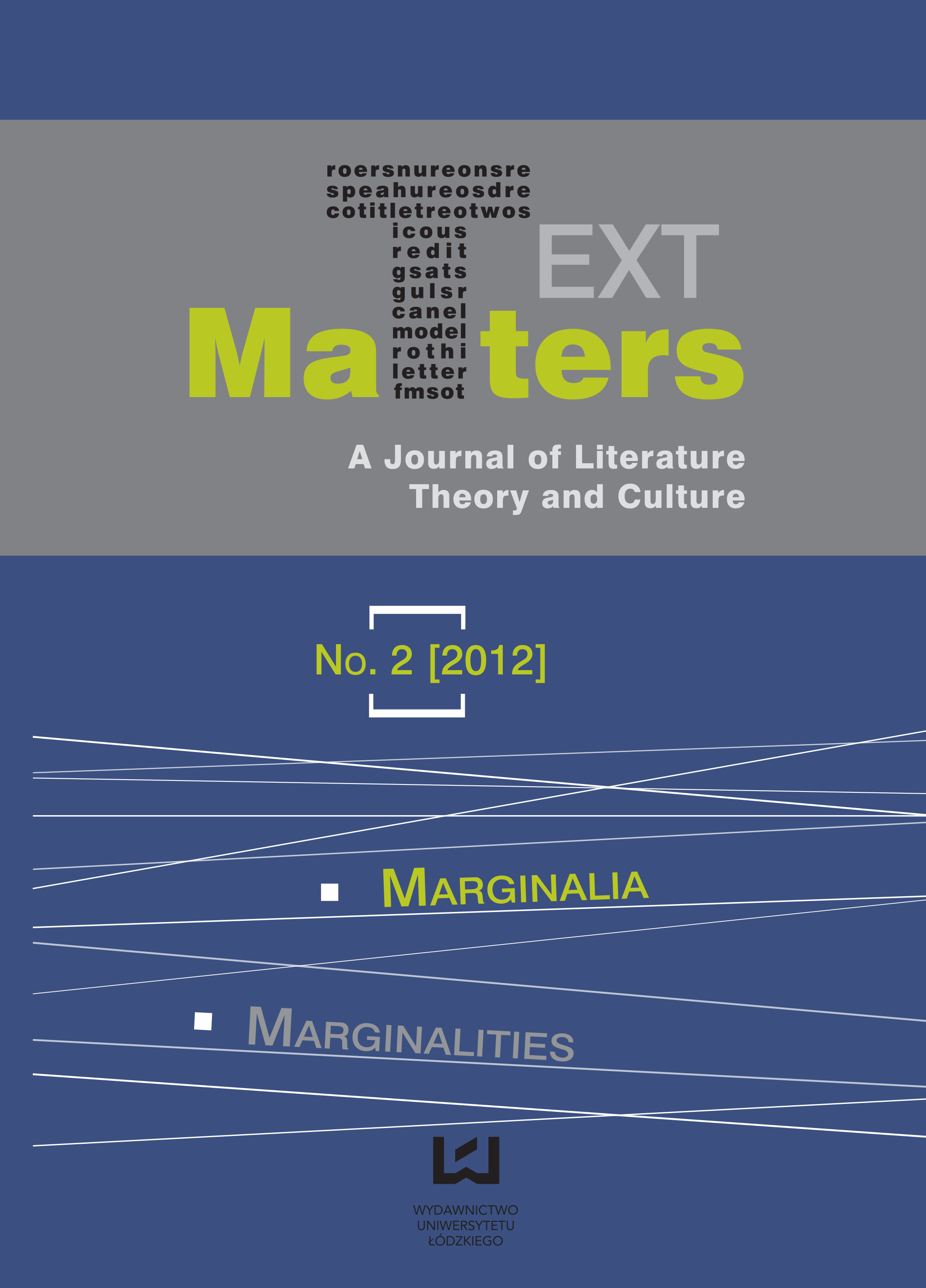At the Margins of the World: The Nature of Limits in Terrence Malick’s The Thin Red Line
DOI:
https://doi.org/10.2478/v10231-012-0055-6Abstract
Terrence Malick’s The Thin Red Line (1998) is an anti-war film which can be read as an Orphic narrative meditating on the relationship between humans and “nature.” Many scholarly readings of the film have been attracted by analyzes that explore the influences of Cavell and Heidegger on Malick (Critchley, Furstenau and MacCavoy, Sinnerbrink). Kaja Silverman’s recent opus, Flesh of My Flesh (2009), contains a chapter titled “All Things Shining.” She elegantly examines how Malick’s film explores the theme of “finitude.” She argues that, ontologically speaking, human existence gains a more intense “glow” when humans are made aware of their mortality. The present becomes paramount. But like Orpheus, the present seeks to make amends with the past. Taking Silverman’s analysis one step further involves exploring finitude through the film’s many animal, arboreal and geological images. Nature can be read as a “margin” that more fully enhances the film’s exploration of connection and finitude. To this end, the opening chapter of Jacques Derrida’s Margins of Philosophy (1986) is invaluable. Entitled “Tympan,” Derrida’s introductory essay introduces a wealth of ecological metaphors. These stimulate an interaction between Silverman’s model of finitude, Derrida’s surprising ecologies at the margin and Malick’s quest for what shines in all beings.
Downloads
References
Andreas-Salomé, Lou. Looking Back: A Memoire. New York: Marlow, 1995. Print.
Google Scholar
Derrida, Jacques. Margins of Philosophy. Trans. Alan Bass. Chicago: Harvester, 1986. Print.
Google Scholar
Chion, Michael. The Thin Red Line. London: BFI, 2004. Print.
Google Scholar
Critchley, Simon. “Calm: On Terrence Malick’s The Thin Red Line.” Film-Philosophy 6.1 (2002). Web. 26 Jan. 2012.
Google Scholar
Freud, Sigmund. Civilization and its Discontents. Trans. James Strachey. 1961. London: Norton, 1989. Print.
Google Scholar
Freud, Sigmund. Totem and Taboo. Trans. James Strachey. 1950. London: Norton, 1989. Print.
Google Scholar
Furstenau, Marc and Leslie MacAvoy. “Terrence Malick’s Heideggerian Cinema: Warn and the Question of Being in The Thin Red Line.” The Cinema of Terrence Malick: Poetic Visions of America. Ed. Hannah Patterson. London: Wallflower, 2003. 173–85. Print.
Google Scholar
Graves, Robert. The Greek Myths: The Complete and Definitive Edition. 1955. London: Penguin, 2011. Print.
Google Scholar
Heidegger, Martin. “What Are Poets For?” Poetry, Language, Thought. Trans. Albert Hofstadter. New York: Harper, 1971. 91–142. Print.
Google Scholar
Jones, James. The Thin Red Line. 1962. New York: Delta, 1998. Print.
Google Scholar
Malick, Terrence. The Thin Red Line. Dir. Terrence Malick. Perf. James Caviezel, Sean Penn, Nick Nolte. Twentieth Century Fox, 1998. Film.
Google Scholar
Parsons, William B. The Enigma of the Oceanic Feelings: Revisioning the Psychoanalytic Theory of Mysticism. New York: Oxford UP, 1999. Print.
Google Scholar
Silverman, Kaja. Flesh of My Flesh. Stanford: Stanford UP, 2009. Print.
Google Scholar
Sinnerbrink, Robert. “A Heideggerian Cinema? On Terrence Malick’s The Thin Red Line.” Film-Philosophy 10.3 (2006): 26–37. Web. 26 Jan. 2011.
Google Scholar
Downloads
Published
How to Cite
Issue
Section
License
Copyright (c) 2012 This content is open access.

This work is licensed under a Creative Commons Attribution-NonCommercial-NoDerivatives 4.0 International License.













